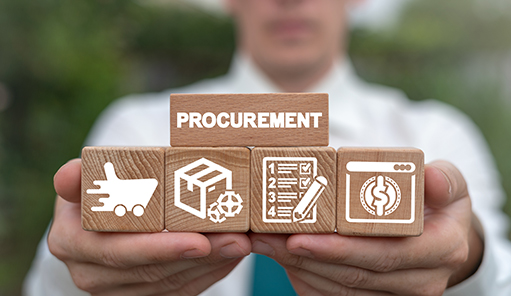
In this instalment of our series, a procurement professional – and veteran of many a tender – explains how to get the most out of your procurement team when you take your mobility needs to RFP.
(Learn how to get buy in from your CFO.)
Before the B of the Bang
This phrase is inspired by sprinter Linford Christie, who talked about starting races “on the B of the Bang.” While HR services procurement can’t match elite sprinting for adrenaline and exhilaration, you can get out of the blocks quickly by going before the B of the Bang. In other words, by getting procurement involved before you even consider going to tender.
Already ahead of the starter’s pistol
 Chances are, if you have a substantial global mobility requirement, your organisation is large enough to have a significant procurement function. Ideally, one that takes a strategic category management approach. With category-led procurement, you’re already ahead of the starter’s pistol.
Chances are, if you have a substantial global mobility requirement, your organisation is large enough to have a significant procurement function. Ideally, one that takes a strategic category management approach. With category-led procurement, you’re already ahead of the starter’s pistol.
(If you don’t have this in your business, don’t despair! You can still jump the gun when it comes to the tender process. We’ll show you how further on.)
A good category plan will tell you everything you need to know about your current requirements and status. It should include a detailed overview of your existing suppliers – spend, scope of work, SLAs and KPIs, and your contractual terms (highlighting any legal or commercial red flags that need to be addressed in future contracts).
It should also cover short- to mid-term plans, particularly if you intend to make significant changes to your requirements at any point. In those plans, you should outline any new technology or updated processes you want to explore.
It’s important to understand alternative suppliers. Both direct competitors to your existing roster and those that offer the innovation you highlighted above.
Finally, your category plan should identify opportunities for savings, efficiencies and / or commercial gains. Some of these will come from the red flags you planted in your existing contract. Others might come from the new tech and updated processes we talked about earlier. Others still will come from further afield – consolidation of spend across markets or a reduction in the number of suppliers, for example.
RFP pre-warm up stage
 If your procurement team is more tactical, then you need to consider alternative ways to beat the B of the Bang. The best, and simplest, way is still to bring procurement in right at the beginning – ideally, before you’ve even done your warmup.
If your procurement team is more tactical, then you need to consider alternative ways to beat the B of the Bang. The best, and simplest, way is still to bring procurement in right at the beginning – ideally, before you’ve even done your warmup.
This way, they can get a clear understanding of your objectives, consult the relevant parts of the business (finance, legal, operations, etc.) and work out the best way to deliver your RFP. Also (importantly), they’ll be by your side to write the tender document with you. They might even have some fancy technology to run the process on.
Even without a category plan, the procurement team will need similar information to that outlined above. The more information you provide at this pre-warmup stage, the better your result will be.
6 points of expert insight for your RFP process
 An experienced HR colleague (another veteran of the game) outlined six points that your procurement team should be able to deliver.
An experienced HR colleague (another veteran of the game) outlined six points that your procurement team should be able to deliver.
For each point, the answer is broadly the same – give as much information, as early in the process, as possible. Then continue to work closely with the procurement team throughout, making sure they get all the information they need.
- Process expertise – procurement know how to write an RFx and they know how to manage the process, from initial RFI/RFP through to pitching and supplier selection.
- Impartiality – they won’t have the same relationship with your suppliers as you do, which means that they’re less biased (and more willing to have any tricky conversations). They’re also likely to spot any attempted bribes or conflicts of interest that might arise.
- Timelines – project management is an important part of any procurement process, and they have the time, skills and awareness to keep your project on track and on time.
- Analysis – these days, technology makes it much easier to compare offers from different suppliers. Even so, it can still be like comparing apples with oranges. Your procurement team will help you make sense of what your suppliers tell you. Or be able (and willing) to request the information again, in the way you actually asked for it.
- Negotiation – This is where your procurement team shines, especially where you’re talking to your incumbent supplier. If there’s a difficult chat to have, procurement (and legal) will happily line up on the starting blocks.
- Compliance – even a category-led procurement team will have fingers in many pies and a wide view of the organisation. They can make sure you align your objectives with those of the business and help you find solutions that deliver against those objectives as best as possible.
On your marks, get set, go
Whether your procurement team is strategic or tactical, regular meetings and open discussions are important – a close working relationship is critical to any successful procurement process.
AGS Relocation recommends that, not only your procurement department, but all the stakeholders in your global mobility programme get a seat at the table so that your team, with our guidance, can arrive at a solution that ticks all boxes for your company.
Contact us today for a no-obligation discussion on how we can help you achieve your global mobility goals.














